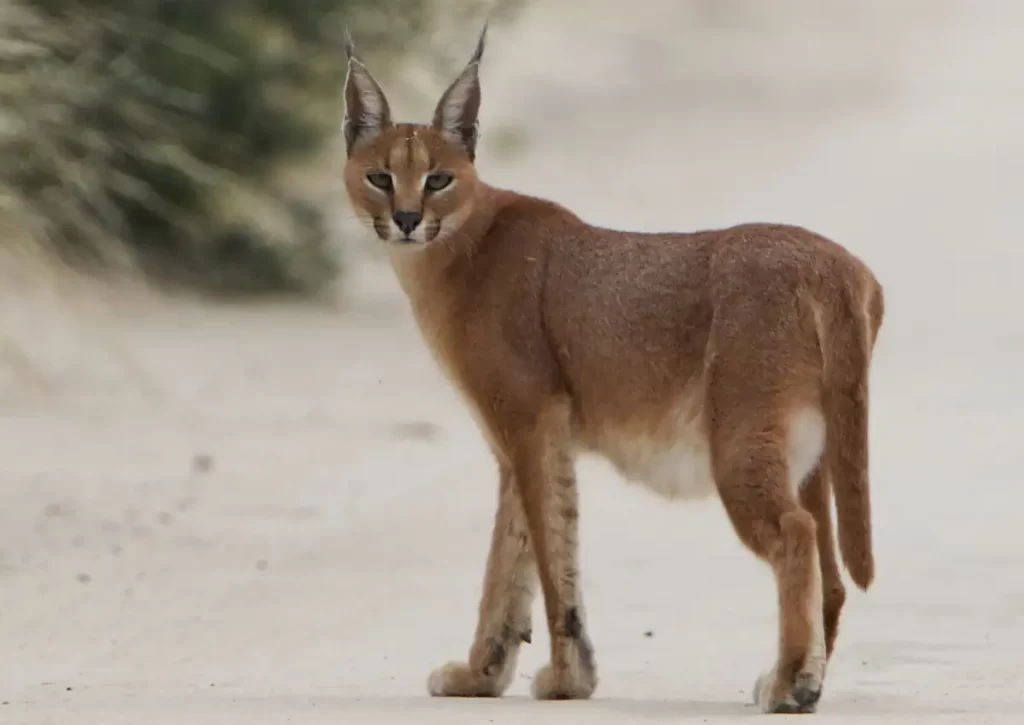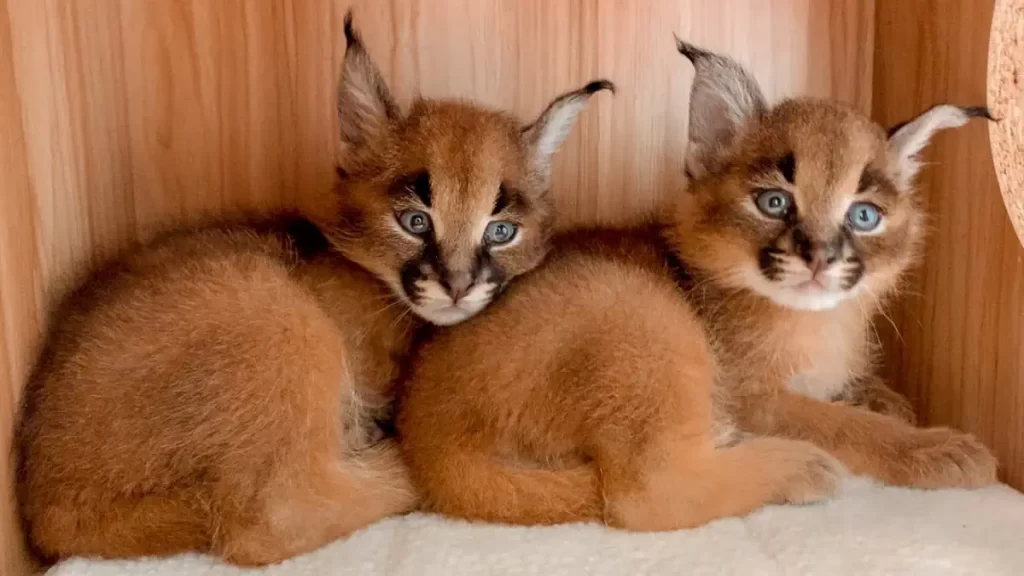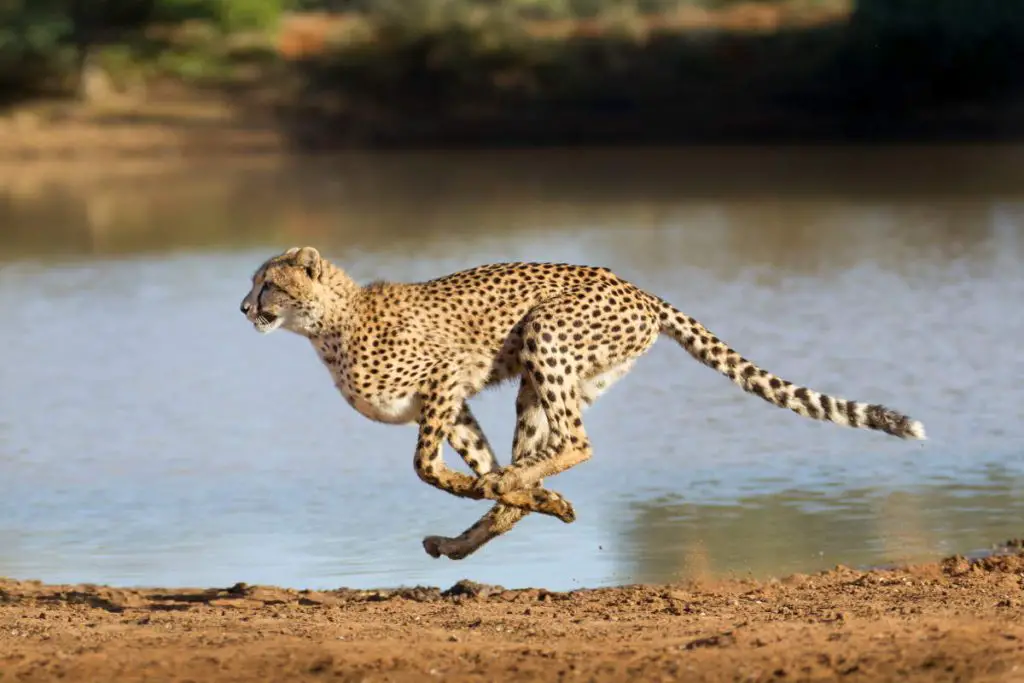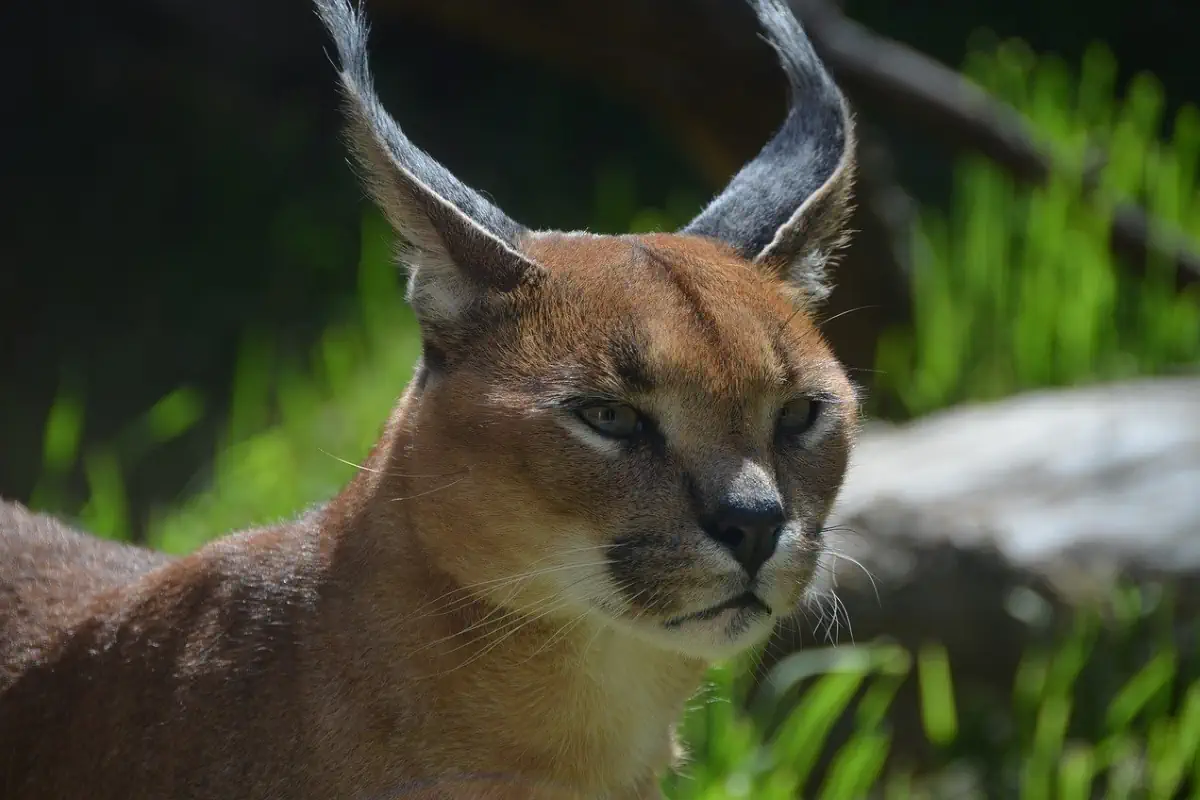Caracal (scientific name: Caracal caracal) is a medium-sized cat that has characteristic long tufted ears. They are native to Africa, the Middle East, Central Asia, and arid areas of Pakistan and northwestern India.
Caracal is also called the “desert lynx”, but they actually do not really look like a lynx. They have longer legs, a more slender body, and their tail is considerably longer than true lynx. Only their big, muscle, and powerful hind legs actually resemble the lynx. Here are 10 amazing caracal facts.

1. Caracals are excellent jumpers
Through their strong hind legs, they can jump 10 feet (3 meters) high even in a sitting position – the height of the basketball hoop!. Their powerful hind legs propel them into the air, making them expert tree climbers and hunters.
This skill helps them catch ducks, geese, and other birds in flight.
2. They are night hunters
They are nocturnal, which means they are active mostly during the night.
Like other cats in the wild, the caracal is a hypercarnivore, it can eat rabbits, rodents, antelopes, and birds.
Caracal cats, like leopards, sometimes store food and scraps in trees and bushes.
3. Caracals mate during the whole year
Cubs are born 68-81 days after mating. After the first month, the mother frequently changes the place of the cubs.
Weaning occurs at around 15 weeks, after that, caracal kittens begin to be fed with meat. The real independence happens in 9-10 months.

4. They have sharp, retractable claws
Caracals have sharp claws that help them cling to trees and climb branches. Like all cats with the exception of cheetahs, their claws are retractable. They also use their claws to hunt and catch their prey. Caracals mark their territory by clawing trees and releasing scent between their toes.
5. Male and female caracals are very similar in appearance
In general, their weight varies: females are 13 to 35 pounds (6 to 16 kilograms); males are 18 to 44 pounds (8 to 20 kilograms).
Their height from the shoulder is about 18 inches (46 centimeters) and their body length is around 24 to 42 inches (61 to 106 centimeters). Their tails are 8 to 13 inches (19.5 to 34 centimeters) long.
They are usually brown and often with grayish or white spots.
Their eye colors are also quite striking.
6. Their lifespan in the wild is up to 12 years
The average lifespan of both male and female caracals is 12 years in the wild. Captive individuals tend to live longer, as long as 20 years.
7. The name caracal comes from a Turkish word, “karakulak“
The Caracal cat, which was determined to be closely related to the Serval and African golden cat, was called “karakulak” by the Central Asian Turks because of the black hair around its ears.
In Turkish, “kara” means “black”, and “kulak” means “ear”. So the Turkish word karakulak literally means “black-ear”. It can be translated as “the black-eared [thing]” or the [thing] that has black ears; in this case, the “black-eared cat” or the “cat that has black ears”.
The name “caracal” was proposed by the French naturalist, mathematician, cosmologist, and encyclopédiste Georges Buffon (7 September 1707 – 16 April 1788) in 1761 who referred to its Turkish name.

8. Caracal is the fastest African small cat
Caracal is the fastest of the smaller African wildcats. Many sources claim they can reach a top speed of 50 mph (80 km/h) for short bursts. It’s not a cheetah-level speed, but still incredibly fast for an animal of this size.

Related: The fastest land animals
9. Their ears are controlled by 20 muscles
The ear tips of the caracal are pointed and hairy, their ears are used to locate prey and are controlled by 20 individual muscles.
This peculiar structure of their ears is thought to be related to hearing function.
10. Caracals don’t require a lot of water to survive
Caracals generally live in hot, dry terrain and are more adapted to warmer and drier conditions than most wild cats.
Although they live in these conditions, they do not need much water. They adapted to the lack of water by taking their liquid needs from their prey.
Some not-so-amazing caracal facts
The global population size of the caracal has not been quantified.
They are most numerous in South Africa and Namibia.
The fact that caracals are in the “Low Risk” section of the Red List prepared by the International Union for Conservation of Nature (IUCN), shows that their lineage is not endangered and their population in nature is high.
But, unfortunately, in Asia and North Africa, they are rare or endangered. They are also critically endangered in Pakistan and endangered in Jordan.
They are widely distributed in central and southern Africa, where they are chased as poultry raiders or shot on sight wherever they are encountered. Ranchers also use poisoned carcasses to kill predators.
Habitat loss due to the human population increase is also another threat.
Sources
- Caracal on Wikipedia
- “The amazing ears of the Caracal” on the International Society for Endangered Cats (ISEC) Canada website
- Caracal on the International Society for Endangered Cats (ISEC) Canada website
- Sloth Facts: 10 Amazing things about these adorable mammals - August 12, 2022
- 10 Amazing Koala Facts - February 18, 2022
- 10 Amazing Humpback Whale Facts - December 22, 2021
